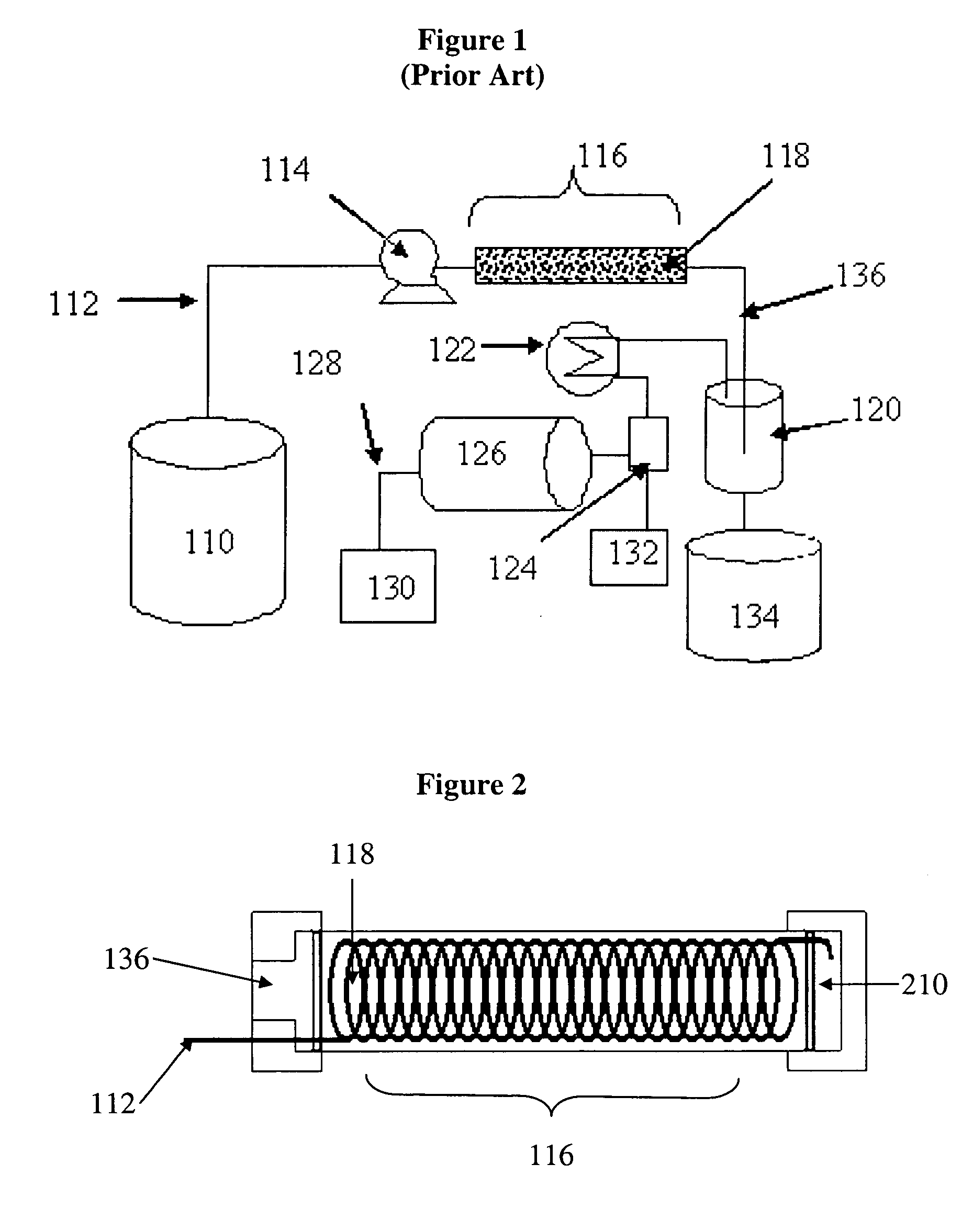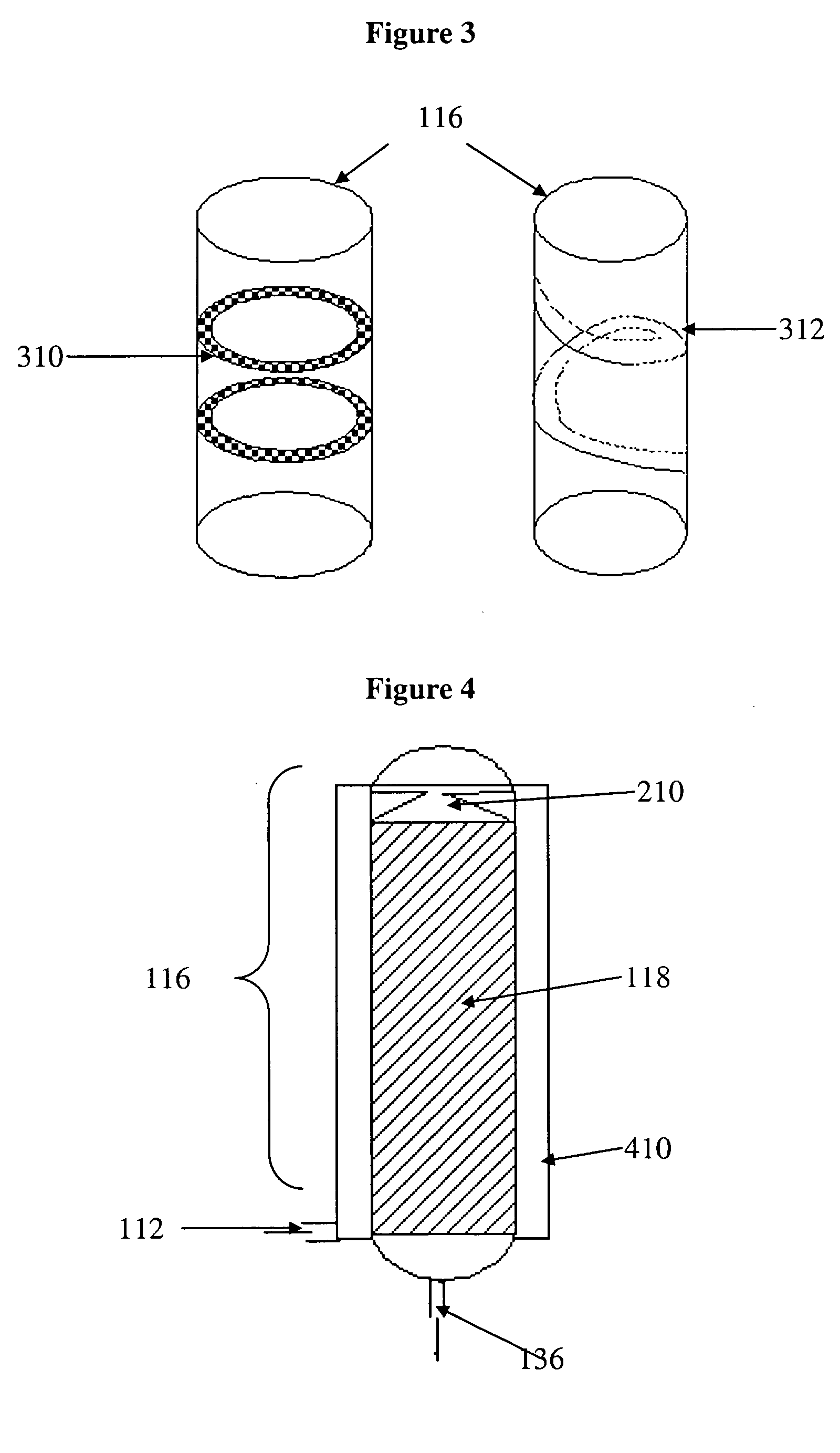Catalytic reactor for hydrogen generation systems
- Summary
- Abstract
- Description
- Claims
- Application Information
AI Technical Summary
Benefits of technology
Problems solved by technology
Method used
Image
Examples
example 1
[0046] A tubular reactor having a 1.0″ outside diameter (“o.d.”) and a length of 7″ (volume of 60 mL) was used for reactor performance tests. The supported catalyst systems were prepared as described in U.S. Pat. No. 6,534,033. Two catalyst systems were tested: ruthenium-cobalt on nickel metal fiber (RuCo / Ni) with a nominal loading of 1.2 wt-% Ru and 3 wt-% Co and cobalt-zinc on nickel metal fiber (CoZn / Ni) with a nominal loading of 3 wt-% Co and 3 wt-% Zn.
[0047] Reactor A was packed with 55 g of RuCo / Ni catalyst; Reactor B was packed with 55 g of CoZn / Ni catalyst. Reactor C was packed with two catalyst beds in accordance with FIG. 5 but Without a heat exchange element; 25 g of RuCo / Ni catalyst was placed in the first portion of the reactor 116 (catalyst bed 118a) and 25 g of CoZn / Ni catalyst was placed in the second portion of the reactor 116 (catalyst bed 118b). Reactors were operated horizontally without insulation and without integration of heat exchanger and membrane elements ...
PUM
 Login to View More
Login to View More Abstract
Description
Claims
Application Information
 Login to View More
Login to View More - R&D
- Intellectual Property
- Life Sciences
- Materials
- Tech Scout
- Unparalleled Data Quality
- Higher Quality Content
- 60% Fewer Hallucinations
Browse by: Latest US Patents, China's latest patents, Technical Efficacy Thesaurus, Application Domain, Technology Topic, Popular Technical Reports.
© 2025 PatSnap. All rights reserved.Legal|Privacy policy|Modern Slavery Act Transparency Statement|Sitemap|About US| Contact US: help@patsnap.com



